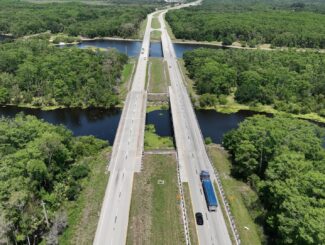September 16, 2024
By Derek Schmidt, Sr Project Manager, WSB
Once in a lifetime federal funding is providing once in a lifetime opportunities for sustainable road design projects across the country. With passage of the Inflation Reduction Act (IRA) and Infrastructure and Jobs Act (IIJA), now is the time for counties, cities and transportation agencies to redesign and redevelop deteriorating roads and bridges to meet sustainability goals. The IIJA is providing $550 billion in new infrastructure investment through 2026 and another $5 billion from the IRA.
However, in order to capitalize on these historic investments, new infrastructure projects need to be designed and constructed with environmental sustainability top of mind. For example, new projects need to ensure they meet standards that may have not existed when the original road or bridge was built like accommodating animal habitats or minimizing pollutants from transportation.
With that in mind, here are some ways counties, cities and transportation agencies can make their roads and bridges projects more sustainable and take advantage of increased federal funding.
Project Sustainability Scoring
To ensure a project qualifies for federal funding, it must be scored. Stronger scores give a project a greater chance at receiving funding.
The available grants also have strict requirements that must be adhered to. For instance, the IRA is providing $3.2 billion for projects that improve walkability, so transit improvements like bike lanes and pedestrian paths have a greater opportunity to secure funding that align with those funding goals. Other ways to achieve stronger scores include using locally available building materials to cut down transportation distances which lowers costs and limits vehicle pollution.
Decreasing Costs and Environmental Impacts
Not only is accounting for environmental impacts a way to improve the odds of securing federal grant fundings, but also a way to decrease overall costs. For example, projects can achieve greater sustainability by reducing transportation distances, using local landfills for waste and using locally available materials like sand. Reducing distances and trips not only cuts down costs but lowers vehicle pollution and a project’s footprint.
Rethinking sustainable road design can also create more environmentally friendly options that better meet community needs. The curb to curb spacing in older, rural roadways, for example, tend to be unnecessarily long. A redeveloped road with a space of 80 feet from curb to curb can be cut down to only 40 feet with the inclusion of expanded green space. This will reduce the overall pavement area, create a road that better fits the demands of the community and increase the overall green space. Ensuring roadways are designed and built to meet traffic needs and improve sustainability features cut down pavement costs and improve a project’s sustainability.
How WSB Can Help
WSB’s team of experts can help your community or agency navigate the influx of federal funding and help secure funding for your sustainable transportation project. With the use of new technology like multidimensional modeling and design, communities and transportation agencies have all the data they need at their fingertips. WSB helps communities and transportation agencies find the best possible design, leverage federal funding opportunities, improve traffic flow, increase the wellbeing of residents and protect the environment one roadway at a time.
Derek is a senior project manager with experience on numerous high profile projects including interstate, trunk highway and major county projects. Derek has the knowledge and background to carry any project from beginning to end and is very experienced in leading large teams.
[email protected] | 612.518.1643


